
Time Signatures: How to Feel the Beat

One of the most important parts of music theory is the time signature.
It’s the first thing a musician looks for on a piece of sheet music before playing a note.
But if you’re just getting started, it’s easy to get confused by time signatures.
Understanding what the numbers mean behind the strange fraction-ish looking symbols can be difficult.
Here’s rule number one– time signatures aren’t fractions at all!
Here’s rule number one– time signatures aren’t fractions at all!
To really understand time signatures there’s a few key concepts that are important to know.
In this guide, we’ll start by explaining what each number in the time signature means and how simple duple time works.
Once you understand how the most common time signatures work, we’ll look at the theory behind the compound and odd time.
Knowing how time signatures work is super important for learning rhythm and writing better music.
Let’s dive in!
Theory guides, production tips, new free plugins, gear guides and more—delivered weekly
Keep up with the LANDR Blog.
What is a time signature?
The time signature is a two number symbol used in western musical notation at the beginning of and throughout sheet music. The first number on top represents the number of beats in each musical bar. The second number on the bottom represents the value in terms of musical notes that each beat receives.
To understand how a time signature works you have to know what a bar or measure in music is.

You also have to know how music is notated and how rhythm is counted in western music.
Bars are used to divide notes into a readable pattern that can be felt rhythmically.
The time signature defines what can be contained within a musical bar and how each beat is counted.
The time signature defines what can be contained within a musical bar and how each beat is counted.
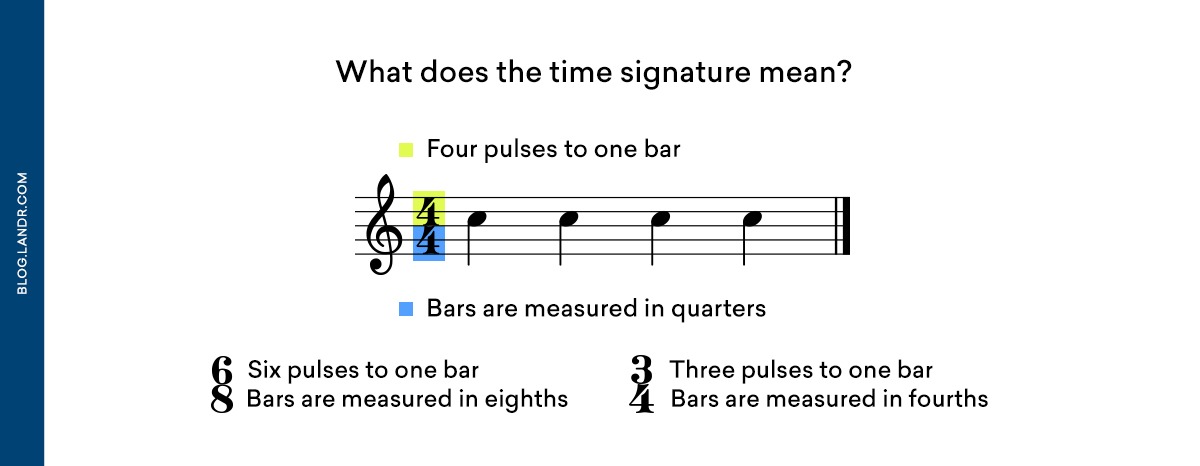
When you’re just getting started it’s best to visualize each time signature by filling musical bars with the exact number of notes each time signature allows.
But, remember that any time signature can have a nearly infinite combination of notes within each musical bar.
Simple and common time signatures
The first time signatures you’ll run into when studying music theory are simple time signatures.
Simple time signatures follow a one-two duple pulse meaning that notes are always grouped into two’s (or duples).

The three most common simple time signatures are:
- Common time or 4/4 time
- Cut time or 2/2 time
- 3/4 time
Common time
The best place to start learning about time signatures is with the most common time signature of all– 4/4 time.
It’s so common, you sometimes find it represented by a C instead of the numbers 4/4 where the time signature is usually found in sheet music.
This C stands for, you guessed it, common time.
In 4/4 (or common) time there are four beats to every measure. These four beats are what the four on top of the time signature refers to.
The four on the bottom means that each of the four beats are counted in terms of quarter notes.
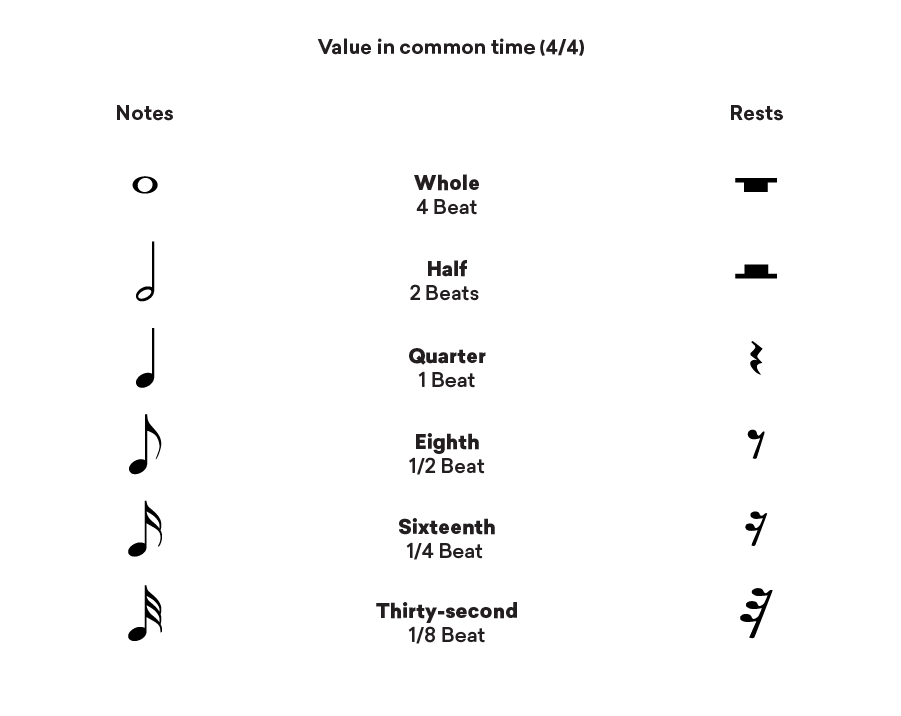
So in 4/4, each bar must equal a total of four quarter notes.
That means you could only fit two half notes in a 4/4 bar or you could only fit eight eighth notes.

What is cut time?
Cut time or cut common time refers to a 2/2 time signature and is sometimes symbolized by a C with a bar through it.

It essentially follows the same feel as 4/4 but with a half note pulse.
Remember how a 4/4 bar can only fit two half notes? 2/2 time is exactly the same, it also can only fit two half notes.
But, the two on the bottom of the 2/2 time signatures says that notes are valued in terms of half notes.
So, because 2/2 note values are half the value of notes in 4/4, two half notes in 2/2 time are equal in value to two quarter notes in 4/4 time.
This half time quality in 2/2 suggests a much faster tempo even if the notation on the page follows the same feel and look as 4/4.
Cut time is most commonly used for faster pieces because they effectively cut note values in half.
Cut time is most commonly used for faster pieces because they effectively cut note values in half.
That means a 4/4 sixteenth note translates to an eighth note in 2/2.
For example, the excerpt below is the exact same in terms of tempo and feel. The notation only changes because of the opposing time signatures.
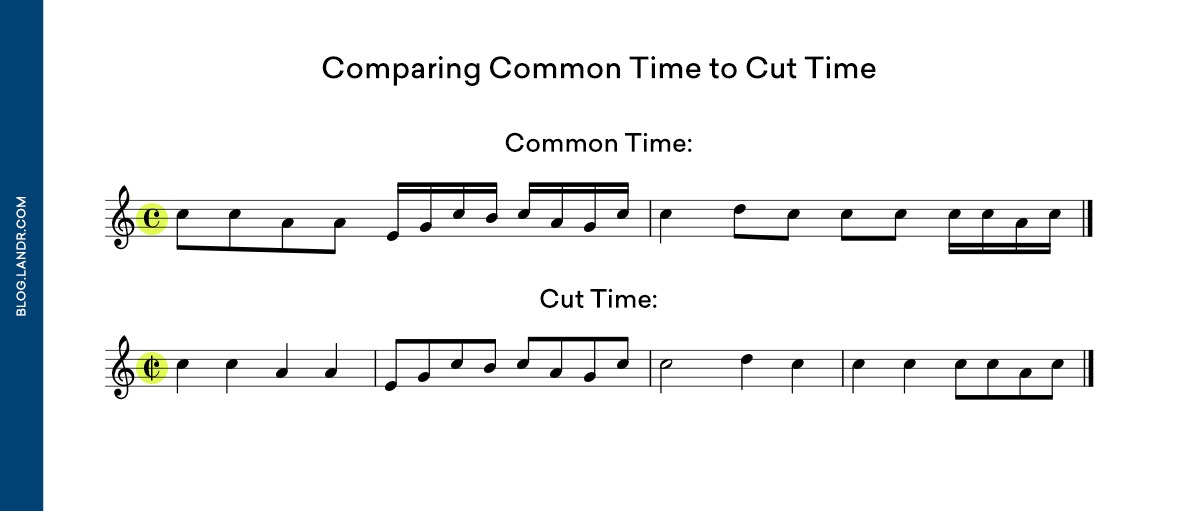
Notation for fast pieces in 4/4 often requires extensive use of double-barred sixteenths and will make a page of sheet music will often look very complicated and intimidating.
Cut time makes it possible to express the same tempo while cutting down on the number of double-barred notes used on a page.
What is 3/4 time?
One simple time signature beginners may struggle with is 3/4.
It follows a triple meter that is felt in one-two-three counts instead of one-two counts making it slightly more rhythmically complex.

However, the principles behind 3/4 remain the same. It’s still counted in quarter notes, but there are only three-quarter notes to a bar.
Compound time signatures
Compound time is where things start to get a little bit interesting.
In compound time notes are grouped together into three’s instead of the groups of two you find in simple time.
In compound time notes are grouped together into three’s instead of the groups of two you find in simple time.
This means every compound time signature follows a feel based on threes.
In general, most compound time signatures have an 8 on the bottom which means notes are counted in terms of eighth notes.
The most common compound time signatures are:
- 6/8 time
- 9/8 time
- 12/8 time
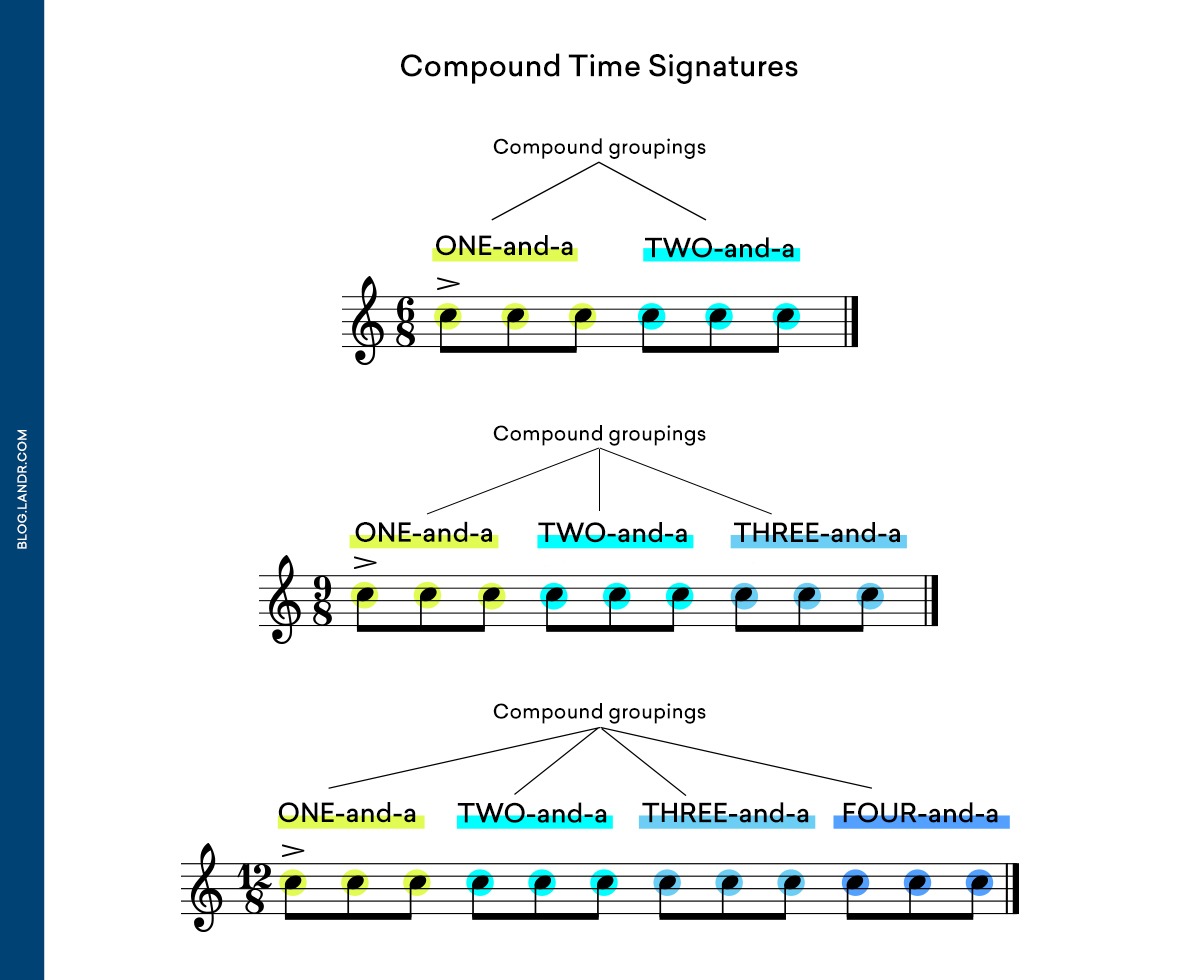
6/8 time is counted in terms six eighth notes and they are grouped into two groups of three.
9/8 time gets a duration of nine eighth notes to each bar and they are grouped into three groups of three.
In 12/8 time each bar gets a duration of twelve eighth notes and they grouped into four groups of three.
Odd time signatures
Odd time signatures can be a little bit more tricky, but once you know how simple time and compound time work it gets a lot easier.
You also need a strong grasp on what it feels like to play duple and triple rhythms and how strong and weak pulses work.
That’s because odd time signatures freely jump between duple and triple meter.
Odd time signatures freely jump between duple and triple meter.
9/8 time signatures are a great example of odd time
I like the example of 9/8 when discussing odd time.
Yes, 9/8 can be understood as compound time, but only if you group the nine eighth notes into threes.
What if you grouped the eighth notes into three groups of two and one group of three.
That would still equal nine eighth notes and obey the rules specified by the 9/8 time signature right? Right.
For the 9/8 time signature, the way that a bar is grouped determines whether it is odd or compound.
So if you group the eighth notes in two’s and three’s (instead of just threes), you a get that distinctive off-kilter odd time feeling.
You can see this example at play in Dave Brubeck’s famous jazz track Blue Rondo a la Turk.

Odd time signatures are combinations of two’s and three’s
Now that you understand how 9/8 time can be divided into different groups, you can apply this to any odd time signature that comes your way.
Don’t be intimidated if you see a 13/8 or 11/4 time signature on the page.
There’s no time signature that can’t be grouped in two’s and three’s.
There’s no time signature that can’t be grouped in two’s and three’s.
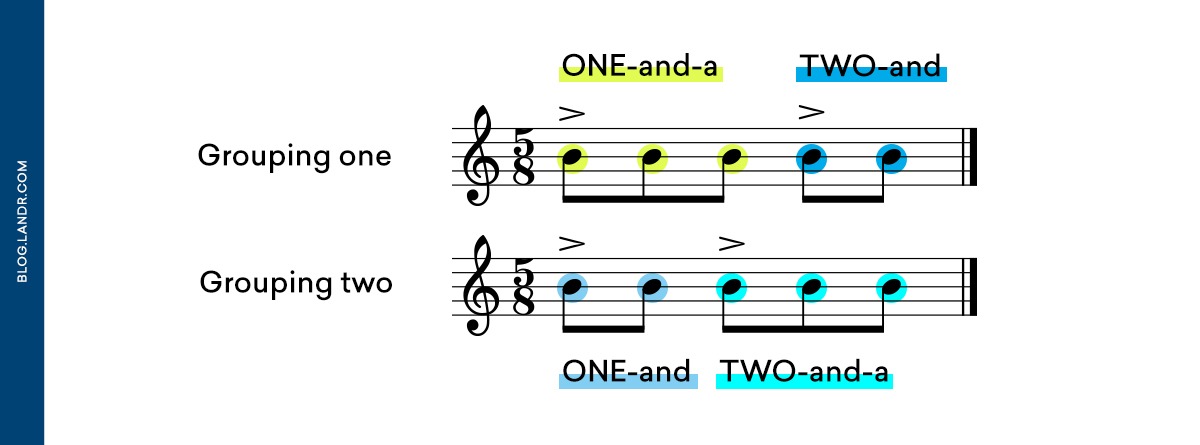
Just look for how the notes are divided and you shouldn’t have any problem feeling the beat.
Of course, taking a second to put down your instrument and simply clap out the rhythm is always a great tool for getting the feel right.
Just feel the beat
Time signatures are great for expressing musical and rhythmic concepts.
Learning a theoretical concept is useful for knowing how to communicate musical ideas on paper, and understanding how certain concepts work.
But, as artists, musicians, and creators the most important part is being free to create what we want to hear.
It’s just as important to practice our rhythmic feel by playing with others, practicing to a metronome and listening to challenging music.
Don’t let the constraints of the page hold you back, instead use time signatures as a method to open up new doors for the music you write.
Gear guides, tips, tutorials, inspiration and more—delivered weekly.
Keep up with the LANDR Blog.




